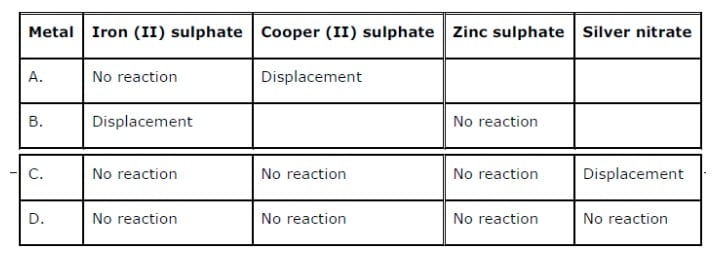
Tungsten carbide finds use in drill bits as a result of its hardness. For reference, diamond comes in at a 10 on the Moh’s scale. On the Moh’s scale of mineral hardness, which ranks substances from 1 to 10, it scores a 9 equal to the hardness of rubies, and bested by only a few substances. This can then be reacted with a more reactive metal, such as sodium or magnesium, to produce titanium.Īnother metal, tungsten, forms a carbide which can actually be of use, as it is extremely hard. It’s extracted from its ore, rutile, which is primarily titanium dioxide, using chlorine and carbon, which converts the titanium dioxide to titanium tetrachloride. Titanium has a high strength to weight ratio, and has important uses in the aerospace industry. As well as this, it’s impossible to use carbon to extract metals that are more reactive than carbon in the reactivity series.įor those metals that could be extracted with carbon, but form carbides, a range of different extraction methods can be used. For this reason, other extraction methods are sometimes necessary. However, with some metals, metal-carbon carbide compounds are formed, which can cause the metal to be brittle. This extraction is possible because iron is below carbon in the reactivity series, and works similarly well for other metals below carbon. The carbon burns in the furnace to form carbon monoxide carbon monoxide then reacts with the iron oxide, displacing the iron and forming carbon dioxide.

This is a case with a common example, iron, the ore of which, haematite, consists primarily of iron oxide. The extraction method used for many metals is the blast furnace process, in which the metal ore is heated with carbon. However, the majority of metals will occur naturally in compounds, often in combination with oxygen or sulfur, which we must remove them from. Some metals, such as gold and silver, are so unreactive they occur largely uncombined with other elements, and are relatively simple to obtain. This is because they can react with the compounds in metal ores, and displace the metals, aiding with their extraction. You’ll notice in the graphic that carbon and hydrogen are also shoehorned in between entries in the list, despite being non-metals. This is illustrated below:Ĭopper sulfate + zinc → zinc sulfate + copperĪs well as helping us predict the outcomes of these reactions, the reactivity series also gives us an insight into why different metals are extracted from their ores in different ways. Conversely, if we try and react a metal compound with a metal lower in the reactivity series, no reaction will take place. If a metal compound reacts with a metal that’s above it in the reactivity series, a displacement reaction will occur, and the more reactive metal will take the place of the less reactive metal in the compound. What use does this series have beyond ranking the reactivity of metals, though? Well, for one, it can help us predict the outcome of certain chemical reactions. The metals designated as the transition metals in the periodic table are much less reactive, and metals such as gold and platinum prop up the bottom of the series, exhibiting little in the way of chemical reaction with any everyday reagents. They’re closely followed by the marginally less reactive group two metals. Group 1 metals, the most reactive metals in the periodic table, head up the rankings. The reactivity series offers a ranking of the metals in order of their reactivity. Caesium, the most reactive metal in the periodic table, reacts extremely violently – hence why it can’t be demonstrated in a classroom! This can be compared to other common metals, such as iron and copper, which produce no reaction when dropped into water. Lithium fizzes gently, sodium fizzes vigorously, and potassium’s reaction is so energetic it bursts into a lilac flame as it zips across the water’s surface. In this demonstration, small pieces of three different metals from group 1 of the periodic table are dropped into a large bowl of water. Metals have a range of reactivities – to illustrate this, you have to look no further than the classic alkali metals in water demonstration commonly used in chemistry classes. This graphic places a selection of common metals into order of reactivity, as well as showing their reactions with air, water and steam. It’s also a useful tool in predicting the products of simple displacement reactions involving two different metals, as well as providing an insight into why different metals are extracted from their ores in different manners.

The metal reactivity series is a commonly taught concept in chemistry, placing the metals, as its name suggests, in order of reactivity from most reactive to least reactive.


 0 kommentar(er)
0 kommentar(er)
